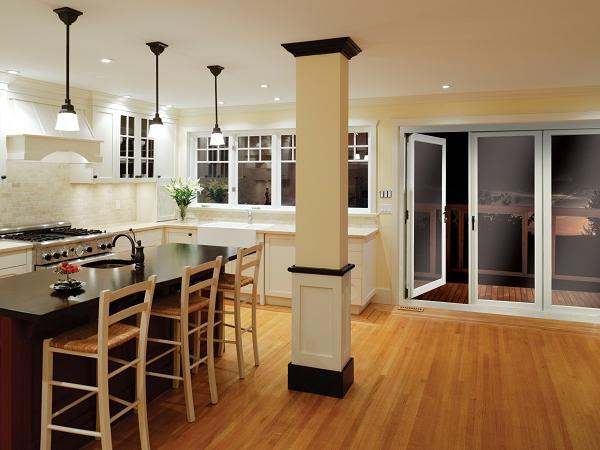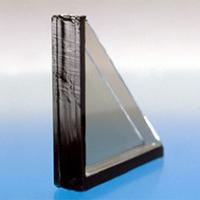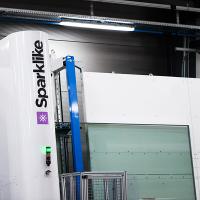
Date: 30 November 2017
Other matters were discussed as well, including a ROESE Water Test and updates from the Insulating Glass Manufacturers Alliance. More work will continue in February during the 81st Annual AAMA Conference in Orlando, FL.
New Task Group Maps AAMA 2400 Update
The newly formed Mounting Flange Installation Task Group (Chair: Kim Flanary [Milgard]), created to develop updates for AAMA 2400-10, Standard Practice for Installation of Windows with a Mounting Flange in Open Stud Frame Construction for Low Wind/Water Exposure, continues deliberations following a September ballot that was unsuccessful due to insufficient response. The following require resolution:
- Degree to which drainage and/or evaporation of incidental water is addressed
- Expansion of regional coverage beyond the Southwestern U.S.
- A quantitative definition of “low wind/water” exposure
- Whether testing to validate the practices suggested in this document should be included
- Possible expansion beyond open stud construction
The goal is to resolve these issues via conference call(s) and re-ballot the draft to task group members before the 2018 AAMA Annual Conference.
Test Sites Sought for Replacement Window Instruction Validation
The AAMA/FMA/WDMA Replacement Window Task Group (Chair: Jim Katsaros [DuPont]) reviewed comments received as part of the recent ballot of the first draft of their document, which provides procedures for the installation of replacement windows in buildings with brick facades.
The goal is to ballot the document before the end of 2017 and also to validate the methods described. Validation of the methods is not possible in laboratories so appropriate buildings need to be located. Possible test sites would be condemned buildings in areas recently impacted by hurricanes.
ROESE Water Test Debate Continues
Work of the ROESE Feasibility Task Group (Chair: Jim Katsaros [DuPont]) for development of a standard for requirements of Rough Opening Extension Support Elements (ROESE) in combination with Foam Plastic Insulating Sheathing (FPIS) has been temporarily suspended.
This work is on hold pending the results of testing of testing being conducted by Home Innovations Research Labs (HIRL) with a grant from the Department of Energy (DOE). It was noted that HIRL remains insistent on using basic methods with exact testing protocols being changed to match performance of control installations.
Flashing and Sealant Document Updates
The Flashing Committee (Chair: Jim Katsaros [DuPont]) reports progress on a variety of fronts in keeping flashing standards up to date with current technologies and best practices.
Work continues on the pending update to AAMA 711-13, Voluntary Specification for Self-Adhering Flashing Used for Installation of Exterior Wall Fenestration Product. Comments to the previously balloted draft were resolved during the 2017 Fall Conference in preparation for re-balloting to the full product group.
The standard spells out methods for testing resistance to water penetration around nails and evaluates how well a self-adhering flashing tape remains bonded to the substrate after thermal cycling at three levels of heat exposure and water immersion.
The revision to AAMA 714-15, Voluntary Specification for Liquid Applied Flashing Used to Create a Water-Resistive Seal around Exterior Wall Openings in Buildings, was also prepared for balloting with tracked changes.
With the updates to 711 and 714 nearing completion, the Flashing Committee has set its sights on revisions to AAMA 713-08, Voluntary Test Method to Determine Chemical Compatibility of Sealants and Self-Adhered Flexible Flashings, originally developed five years ago in response to the industry’s stated concerns about black ooze at the window/wall interface.
Since aesthetics are an indication of what is going on at the performance level, the original document was developed based on that criteria. At issue now is determining the best criteria for sealant, with topics for consideration including adhesion performance and chemical compatibility, and whether additional performance testing should be included.
Suggestions have been made that AAMA 713 should instruct users to do an adhesion test, based on ASTM C920 - 14a, Standard Specification for Elastomeric Joint Sealants. As part of the effort, AAMA staff has sent a survey to WIC members to determine the sufficiency of the current scope of the document, and whether performance attributes should be included.
Meanwhile, under the auspices of the Sealants Maintenance Committee, two separate ballots to the product group are also being processed for changes to the AAMA 800 sealants compendium.
The Exterior Sealant Long-Term Durability Work Group Report (Chair: Steve Altum [Dow Corning]), formed last February, has identified its initial focus to be the AAMA 808 and 809 sections of the AAMA 800 document.
AAMA 808.3 addresses exterior perimeter sealing compounds for window and sliding glass door installation, which are intended to remain elastic or ductile indefinitely to prevent air and water intrusion.
AAMA 809.2 addresses non-drying sealant intended for use in sealing hidden joints against air and water intrusion when used with buck frames, thresholds or as “buttering” sealants.
Initial conference call participants touched on topics such as whether to include glazing in the scope, the degree of accelerated UV exposure testing and references to existing testing methods such as ASTM G154-16, Standard Practice for Operating Fluorescent Ultraviolet (UV) Lamp Apparatus for Exposure of Nonmetallic Materials, and ASTM G155-13, Standard Practice for Operating Xenon Arc Light Apparatus for Exposure of Non-Metallic Materials.
Also, the AAMA 812 Insulating Expanding Foams Task Group (Chair: Beverly Selle [Dow]), is pursuing an update of AAMA 812-04 (2010), Voluntary Practice for Assessment of Single Component Aerosol Expanding Polyurethane Foams for Sealing Rough Openings of Fenestration Installations. The current draft, incorporating changes resulting from recent teleconferences, is to be re-balloted.
The AAMA 813 Simulated Divided Lite Task Group (Chair: Chris Habegger [Gaska]) continues to review the document to provide a voluntary standard to establish minimum performance criteria for adhesive systems used to attach SDL bars to glass. Once this review is completed, the document will be balloted to the task group.
The Guidelines for Use of Sealants on Substrates Task Group (Chair: Guy Long [Prosoco]) continues to develop this guidelines document as directed by the Sealants and Adhesives Technical Steering Committee. The group nearly completed review of the document at its last conference call. The next step will be a ballot to the task group.
Industry Updates
The Insulating Glass Manufacturers Alliance (IGMA) reported that a sealant depth survey will be conducted preparatory to developing updates to adhesion testing protocols. This would include a voluntary fingerprint testing program, in which a “fingerprint” of a chemical component is compared year to year to ensure no substantive changes in the formulation.
IGMA further informs that a Polyisobutyl (PIB) document is at a task group ballot. The document addresses PIB as the primary sealant for dual seal insulated glass systems as the main moisture vapor seal between glass and the metal spacer. Also, a new task group will address PIB performance under increased testing temperatures.
 600450
600450























Add new comment